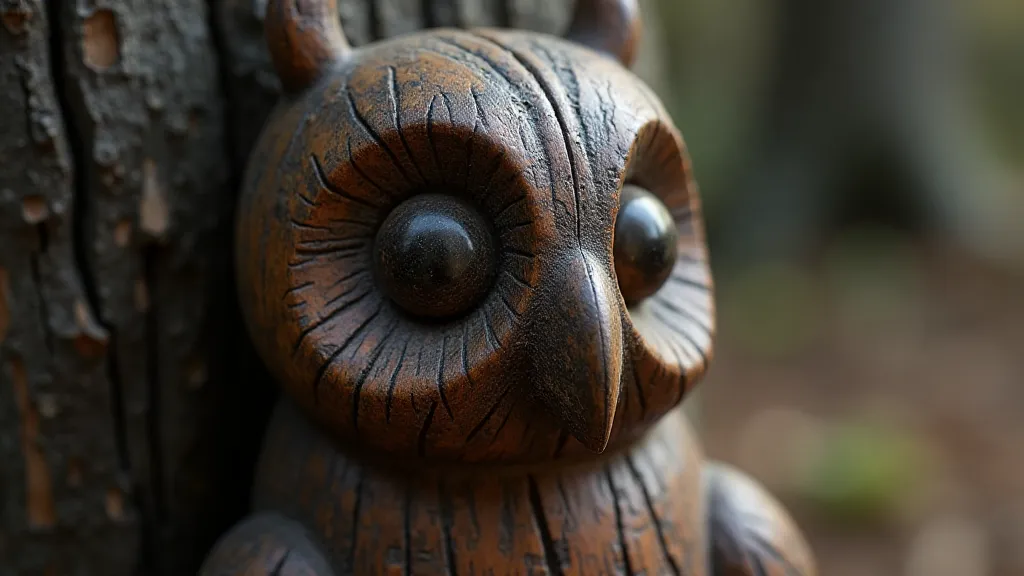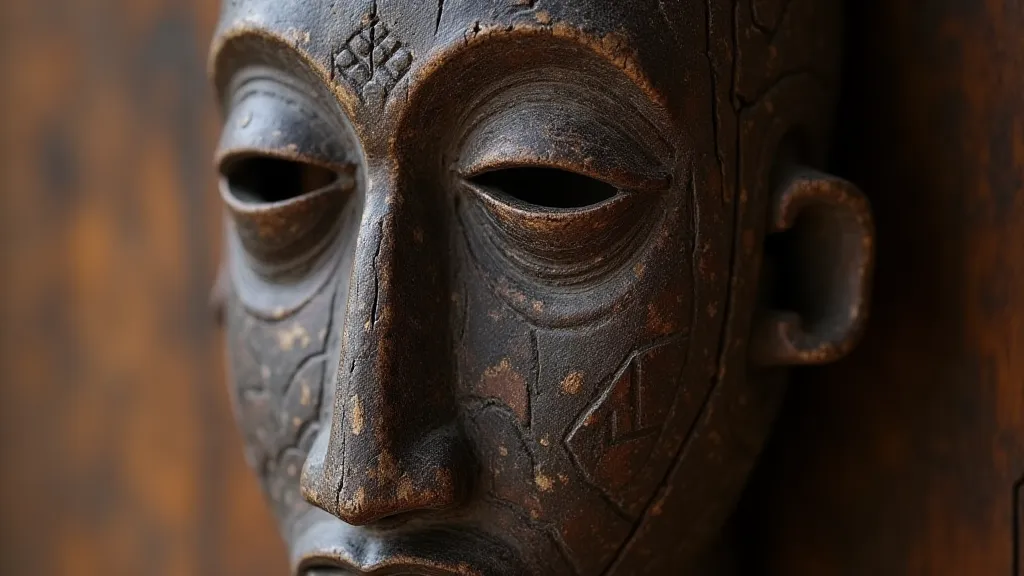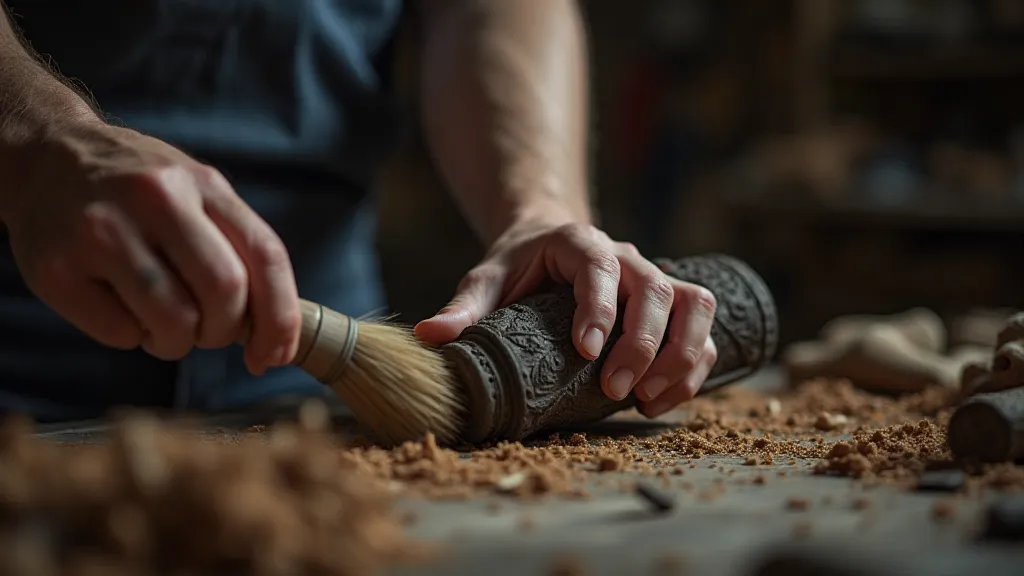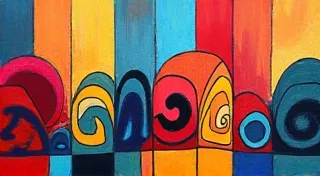The Geometry of the Soul: Sacred Proportion in Wood Carving Motifs
There’s a profound resonance that echoes from antique wood carvings, a quiet hum that transcends mere craftsmanship. It’s not just the skill in transforming a rough block of wood into a recognizable form; it's the deep, underlying sense of order, a visual poetry expressed in line and curve. I remember discovering this firsthand as a child, mesmerized by a small, intricately carved wooden bird my grandfather kept on his workbench. It wasn't particularly grand, but the proportions felt…perfect. Later, I would learn that this wasn't accidental; it was the result of centuries of tradition, of artisans drawing on a shared understanding of sacred geometry, unconsciously embedding symbolic meaning into their creations. This article explores the fascinating interplay between mathematical ratios and spiritual significance within diverse regional wood carving styles.

The Golden Ratio: A Universal Language
Across continents and cultures, certain mathematical ratios consistently appear in art and architecture. Perhaps the most recognizable is the Golden Ratio, approximately 1.618. Also known as Phi, it’s found in the arrangement of sunflower seeds, the spiral of a nautilus shell, and, significantly, in many traditional wood carving motifs. The ancient Greeks revered it, believing it embodied ideal beauty and harmony. Its presence isn't always explicit; rather, it often manifests as a subtle underlying structure, influencing the proportions of figures, the spacing of elements, and the overall composition.
Consider, for instance, the traditional wood carvings of the Carpathian region, particularly those from Romania. The iconic "Maramures" gates, elaborate wooden gates adorning homes, often incorporate figures of animals, humans, and mythical creatures. A closer examination reveals that the height and width of these figures, and the relationships between the gate's overall dimensions, frequently approximate the Golden Ratio. This wasn't a conscious formula; it was an intuitive application of a deeply ingrained understanding of beauty and balance.
Japanese Netsuke: Miniature Geometry
The artistry of Japanese Netsuke offers another compelling example. These small, intricately carved figures, traditionally used as toggles to secure clothing (before buttons became commonplace), demonstrate a mastery of proportion and form in a miniature scale. The placement of features, the angle of limbs, and the overall body shape are rarely random. They reflect a careful consideration of visual harmony, frequently influenced by principles drawn from traditional Japanese aesthetics, such as the concept of *ma* (negative space) and the principle of asymmetrical balance.
The recurring use of triangles in many Netsuke carvings is particularly noteworthy. Triangles represent stability, strength, and spiritual ascension in Japanese cosmology. The deliberate incorporation of triangular forms, often subtly integrated into the figure’s pose or the surrounding details, elevates the carving beyond mere representation; it transforms it into a symbolic vessel.
African Tribal Carvings: Rhythms of Proportion
Moving across the globe, African tribal carvings offer a different, yet equally compelling, perspective on sacred proportion. While the explicit use of the Golden Ratio may be less common (though it's certainly present in many forms), the principle of rhythmic repetition and balanced asymmetry dominates. Yoruba carvings from Nigeria, for example, are renowned for their stylized human figures, often depicting ancestral spirits or deities. These figures are rarely perfectly symmetrical; rather, they possess a deliberate asymmetry that embodies the dynamism of life and the interconnectedness of all things.
The spacing between elements, the thickness of limbs, the size of facial features – all are meticulously considered to create a sense of visual rhythm and harmony. This isn't about achieving mathematical perfection; it’s about evoking a feeling of spiritual power and connection to the ancestral realm. The repetition of certain motifs, like spirals or geometric patterns, reinforces this sense of rhythmic continuity, grounding the carving in a shared cultural understanding.

The Role of Tradition and Apprenticeship
It’s important to understand that these proportions weren't typically the result of formal mathematical training. Artisans learned through observation, imitation, and a long process of apprenticeship. Young carvers would meticulously copy the work of their masters, absorbing not just the technical skills but also the underlying aesthetic principles. The knowledge was passed down through generations, evolving over time but retaining its core essence.
The use of specific wood types also played a role. The grain and color of the wood itself influenced the design, and certain types were associated with particular deities or spirits. For example, in some cultures, dark, richly grained woods were reserved for carvings of ancestral figures, while lighter woods were used for representations of benevolent spirits.
Restoration and Collecting: A Deeper Appreciation
For those interested in restoring or collecting regional wood carvings, recognizing these underlying principles can offer a deeper appreciation for the artistry involved. Understanding the significance of certain proportions allows you to identify authentic pieces and recognize the subtle nuances that differentiate them from mere imitations. Restoration efforts should always strive to preserve the original character and integrity of the carving, respecting the original proportions and avoiding any alterations that might compromise its artistic merit. A true restoration is not about making something "perfect," but about revealing the beauty that already exists within.
Careful cleaning, stabilization of cracks, and re-attachment of loose elements are often all that's needed to revive a neglected carving. Avoid aggressive cleaning methods or the application of varnish or paints, as these can obscure the natural beauty of the wood and detract from its historical significance.

A Legacy of Beauty
The geometry of the soul isn’t merely a technical observation; it’s a window into the cultural and spiritual beliefs of countless generations. These regional wood carvings represent more than just objects of aesthetic beauty; they are tangible expressions of a shared human desire to understand the universe and our place within it. By recognizing the underlying proportions and appreciating the craftsmanship involved, we can connect with the artists and the traditions that have shaped these remarkable works of art, ensuring that their legacy continues to inspire for generations to come.





